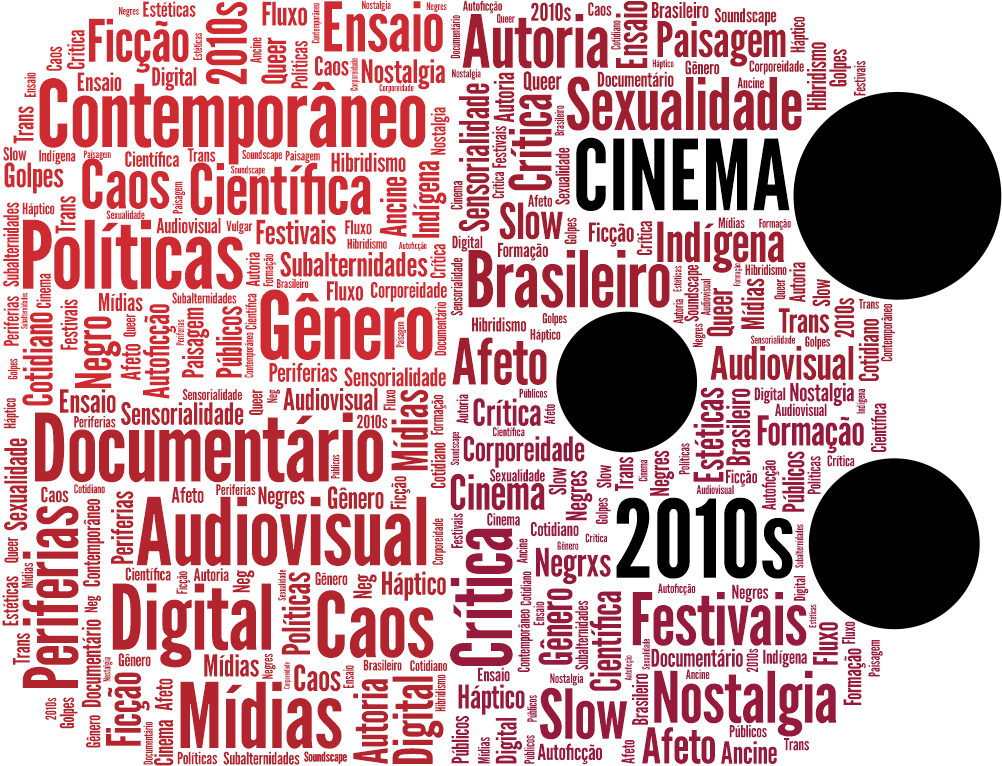We Never Took Deconstruction Seriously Enough (on affects, formalism, and film theory)
An Interview with Eugenie Brinkema
DOI:
https://doi.org/10.22475/rebeca.v12n1.966Keywords:
Eugenie Brinkema, Deconstructivism, Afect, Film Theory, FormAbstract
In an interview conducted by Jiří Anger and Tomáš Jirsa, the American theoretician Eugenie Brinkema explains her formalist approach to horror and other “bodily genres”, talks about the ethical dimension of violence and the challenges of affective analysis for film theory, and offers a wide range of inspiring ways to make thinking through film aesthetically generative and conceptually enriching.
Downloads
References
ADORNO, Theodor W. On Kierkegaard’s Doctrine of Love. In: BLOOM, Harold. Modern Critical Views. New York: Chelsea House, 1989. p.19-34.
BARTHES, Roland. Camera Lucida: Reflections on Photography. Nova York: Hill e Wang, 1981.
BELLOUR, Raymond. The Analysis of Film. Bloomington: Indiana University Press, 2001.
BENSON-ALLOT, Caetlin, BRINKEMA, Eugenie. The Design and Componentry of Horror. Journal of Visual Culture, v. 14.3, 2015.
BOGOST, Ian. Alien Phenomenology, or What It’s Like to be a Thing. Minneapolis: University of Minnesota Press, 2012.
BRINKEMA, Eugenie. Laura Dern's Vomit, or, Kant and Derrida in Oz. Film-Philosophy, v. 15.2, p. 51-69, 2011.
______. ‘Dogtooth’, issue on Distance. World Picture, v. 7, outono 2012. Disponível em: http://www.worldpicturejournal.com/WP_7/Brinkema.html. Acesso em: 09/07/2023.
______. The Forms of the Affects. Durham: Duke University Press, 2014.
______. Violence and the Diagram; Or, The Human Centipede. qui parle, v. 24.2, p. 75-108, 2016.
______. Irrumation, the Interrogative: Extreme Porn and the Crisis of Reading. Polygraph, v. 26, p. 130-164, 2017a.
______. 26 more or less: Sophie Calle’s Secrets. In: HULDISCH, Henriette. (org.) An Inventory of Shimmers: Objects of Intimacy in Contemporary Art. Munich, London, New York: DelMonico Books / Prestel, 2017b. p. 28-37.
______. (Nearly) Nothing to Express : Horror : some Tread : a Toroid. In: ALPHEN, Ernst van; JIRSA, Tomáš. How to Do Things with Affects: Affective Triggers in Aesthetic Forms and Cultural Practices. Leiden: Brill, 2019. p. 81-98.
______. Colors without Bodies: Wes Anderson's Drab Ethics. In: HERZOGENRATH, Bernd (org.). Practical Aesthetics. Nova York e Londres: Bloomsbury, 2020. p.73-82 .
______. Life-Destroying Diagrams. Durham: Duke University Press, 2022.
BURCH, Noël. To the Distant Observer: Form and Meaning in the Japanese Cinema. Berkeley e Los Angeles: University of California Press, 1979.
CAVELL, Stanley. The World Viewed: Reflections on the Ontology of Film. Cambridge: Harvard University Press, 1979.
CULP, Andrew. Dark Deleuze. Minneapolis: University of Minnesota Press, 2016.
DELEUZE, Gilles. Francis Bacon: The Logic of Sensation. Londres e Nova York: Continuum, 2003.
DENIS, Maurice. Definition of Neotraditionism. Art et Critique, ago. 1890.
DERRIDA, Jacques. Jacques Derrida: Acts of Literature. Londres e Nova York: Routledge, 1992.
______. La forme et la faç̧on (plus jamais: envers et contre tout, ne plus jamais penser ç̧a ‘pour la forme’). In: DAVID, Alain (org.) Racisme et antisémitisme: Essai de philosophie sur l'envers des concept. Paris: Ellipses, 2001. p. 7-28.
HÄGGLUND, Martin. Radical Atheism: Derrida and the Time of Life. California: Stanford University Press, 2008.
HANICH, Julian. Review of Eugenie Brinkema: The Forms of the Affects. Projections: The Journal for Movies and Mind, v. 9, n. 1, p. 112-117, 2015.
HARMAN, Graham. Weird Realism: Lovecraft and Philosophy. Winchester: Zero Books, 2012.
HEATH, Stephen. Questions of Cinema. Bloomington: Indiana University Press, 1981.
KIERKEGAARD, Søren. Works of Love: Kierkegaard’s Writings, XVI. Princeton: Princeton University Press, 1998.
MARKS, Laura U. The Skin of the Film: Intercultural Cinema, Embodiment, and the Senses. Durham: Duke University Press, 2000.
MASSUMI, Brian. Parables for the Virtual: Movement, Affect, Sensation. Durham: Duke University Press, 2002.
NGAI, Sianne. Ugly Feelings. Cambridge: Harvard University Press, 2005.
RUBBER. Direção: Quentin Dupieux. Canadá: 2010.
SALVATO, Nick. Obstruction. Durham: Duke University Press, 2016.
SHAVIRO, Steven. The Cinematic Body. Minneapolis: Minnesota University Press, 1993.
SIEGERT, Bernhard. Cultural Techniques: Grids, Filters, Doors, and Other Articulations of the Real. New York: Fordham University Press, 2015.
THACKER, Eugene. In the Dust of This Planet: Horror of Philosophy, vol. 1. Winchester: Zero Books, 2011.
______. Cosmic Pessimism. Minneapolis: Univocal Publishing, 2015a.
______. Starry Speculative Corpse: Horror of Philosophy, vol. 2. Winchester: Zero Books, 2015b.
______. Tentacles Longer Than Night: Horror of Philosophy, vol. 3. Winchester: Zero Books, 2015c.
WILLIAMS, Linda. Film Bodies: Gender, Genre, Excess. Film Quarterly, v. 44, n. 4, p. 2-13, 1991.
WILLIAMS, Raymond. Keywords: A Vocabulary of Culture and Society. Oxford: Oxford University Press, 2015.
Downloads
Published
Issue
Section
License
Copyright (c) 2023 Jiří Anger, Tomáš Jirsa

This work is licensed under a Creative Commons Attribution 4.0 International License.
1. Authors retain the copyright and grant the journal the right of first publication, with the work simultaneously licensed under theCreative Commons Attribution License, which allows the sharing of work with acknowledgment of authorship and initial publication in this journal.
2. Authors are authorized to take additional contracts separately, for non-exclusive distribution of the version of the work published in this journal (e.g. publish in institutional repository or as a book chapter), with acknowledgment of authorship and initial publication in this journal.
This work is licensed under a Creative Commons Attribution-NonCommercial-ShareAlike 3.0 Unported License.
CC BY-NC-SA
This license allows others to remix, adapt, and create from your work for non-commercial purposes, provided they credit you and license new creations under identical terms.
You are free to:
● Share — copy and redistribute the material in any medium or format.
● Adapt — remix, transform, and build upon the material.
The licensor cannot revoke these freedoms as long as you follow the license terms:
● You must give appropriate credit, provide a link to the license, andindicate if changes were made. You may do so in any reasonable manner, but not in any way that suggests the licensor endorses you or your use.
● You may not use the material for commercial purposes.












